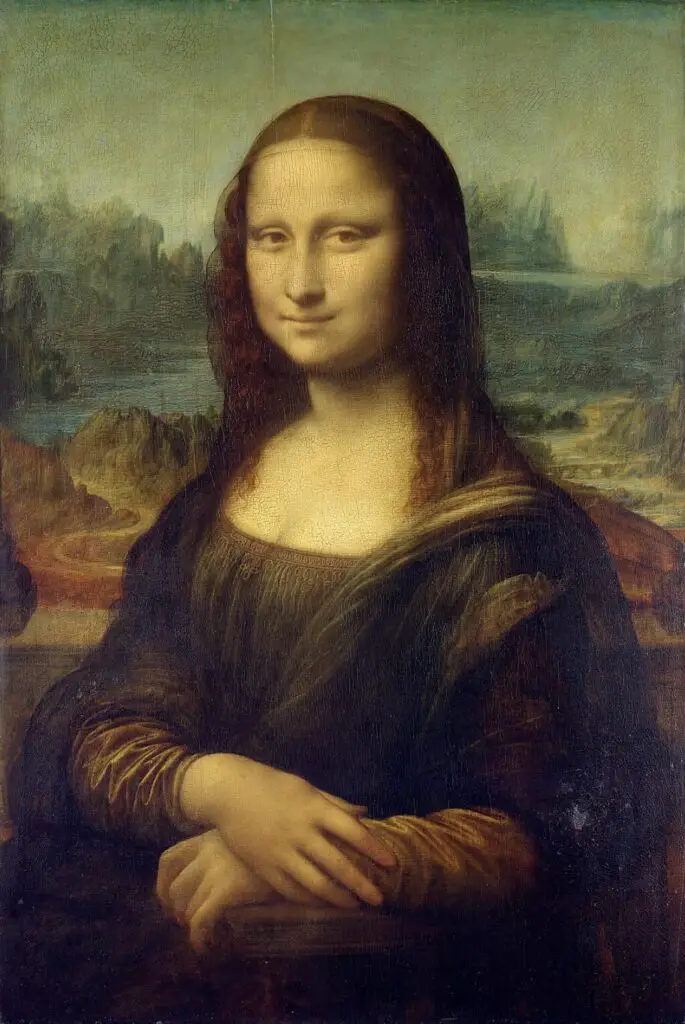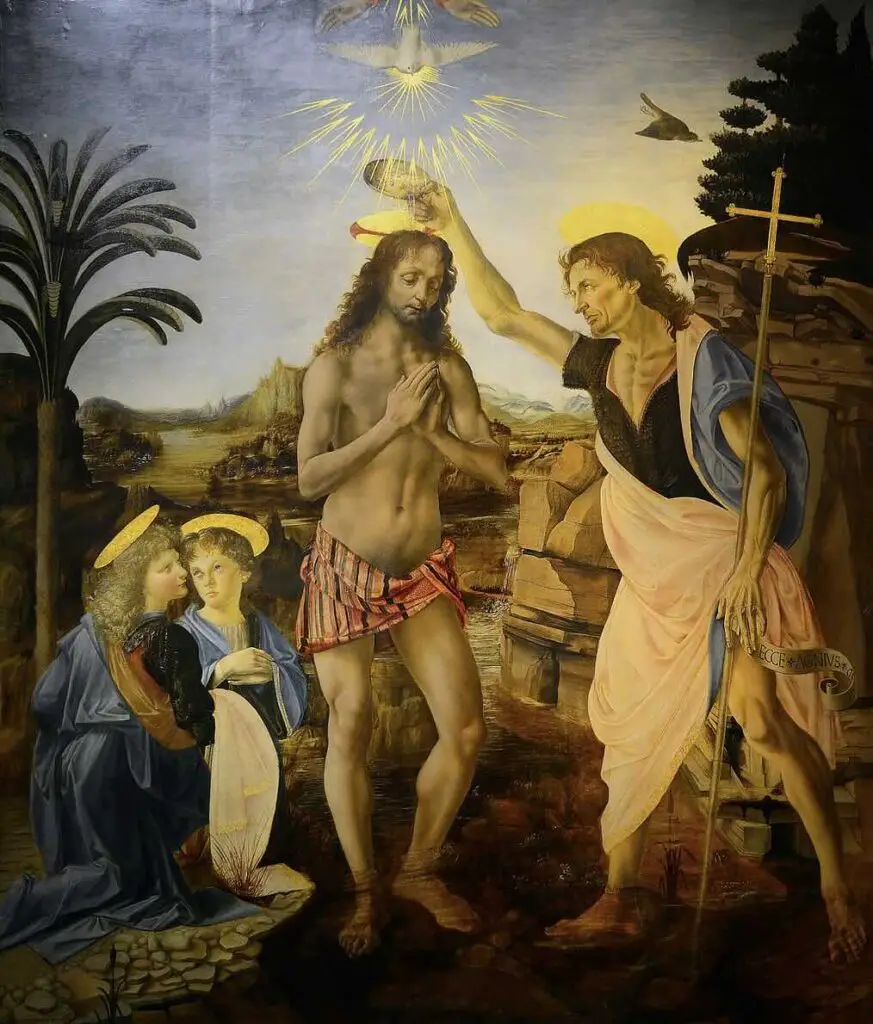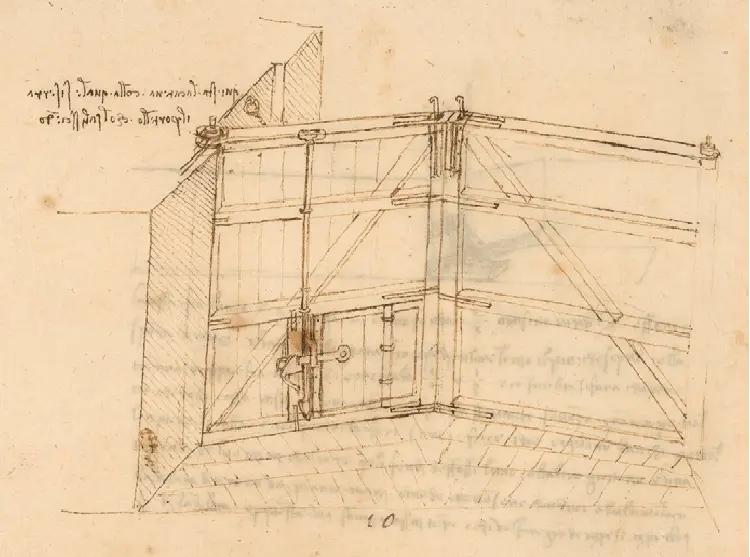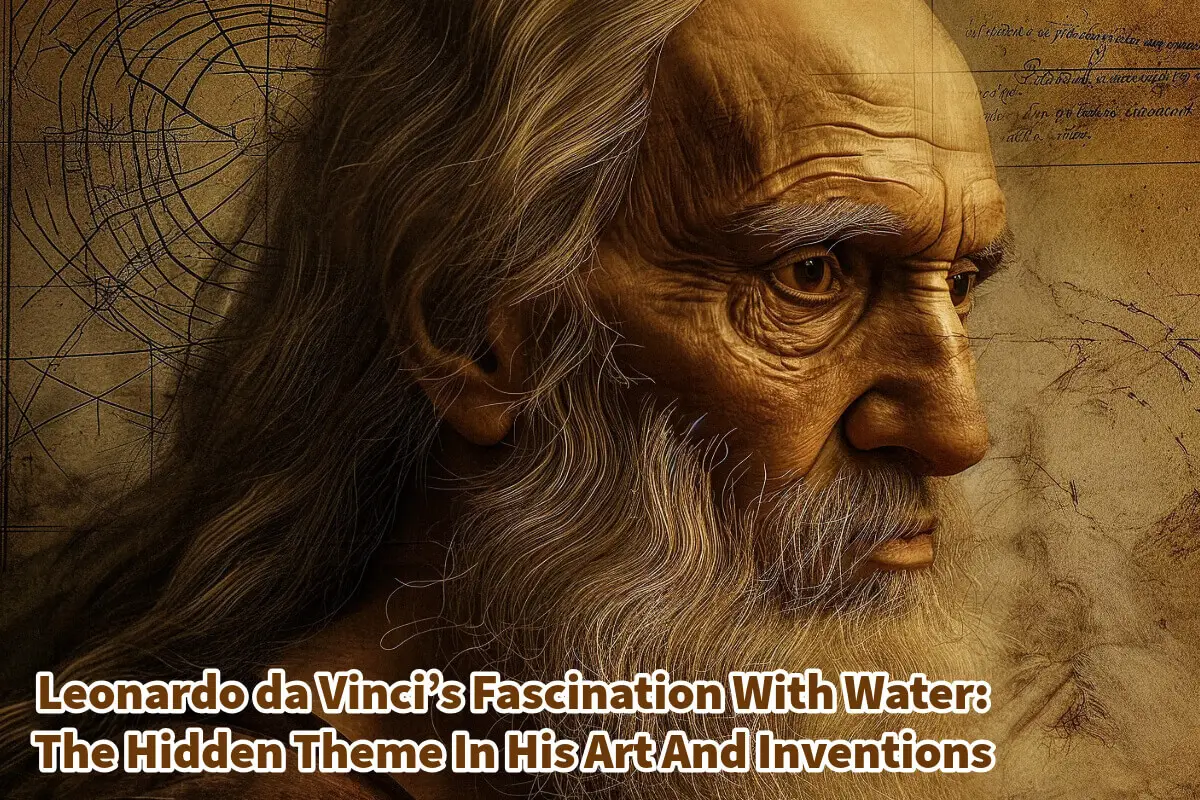Leonardo da Vinci’s legacy is boundless curiosity, unmatched creativity, and a profound understanding of the natural world. Water played a particularly crucial role among the many subjects that captivated the Renaissance polymath.
Leonardo da Vinci’s keen observations of rivers, rain, streams, and oceans were foundational to his studies of nature and influenced his artistic output and numerous inventions. Leonardo’s exploration of water, whether through his paintings or engineering designs, demonstrates his belief that water was not only the lifeblood of the earth but also a force of immense power and mystery.
Table of Contents
- Leonardo: A Master of Observation
- Leonardo’s Studies of Water in Motion
- Water in Leonardo’s Art: A Hidden Theme
- Leonardo’s Inventions Involving Water
- Hidden Themes in Leonardo’s Water Studies
- Related Questions
Read on as we delve into how water, an overlooked theme in Leonardo’s works, was central to his artistic vision and technological innovations. From sketches of complex hydrodynamics to the early designs of underwater devices, Leonardo’s fascination with water reveals his deep understanding of nature and his forward-thinking approach to water use in human society.
Leonardo: A Master of Observation

Leonardo da Vinci was, above all, a man of observation. His work, across disciplines, was grounded in the belief that understanding the world required careful study and an intimate knowledge of the natural elements.
He observed with an intensity that allowed him to see patterns and details others missed, particularly regarding water.
Leonardo meticulously recorded his observations of water in all its forms in his notebooks. He described how water flowed through rivers, rain fell from the sky, and waves formed and broke upon the shore.
His fascination with water was not purely artistic; it was scientific. He believed that understanding water’s behavior could uncover fundamental truths about the world.
One of his most famous quotes about water demonstrates this belief when he says:
“Water is the driving force of all nature.”
Leonardo Da Vinci
For Leonardo, water was not merely a passive element; it was a dynamic and powerful entity that shaped landscapes, nourished life, and, when unchecked, could cause destruction. His understanding of water as a creative and destructive force deeply informed his work.
Leonardo’s Studies of Water in Motion

Leonardo’s fascination with water is evident in his numerous studies of water in motion, often categorized under the broader term “hydrodynamics.” His sketches depict water swirling in eddies, cascading in waterfalls, and flowing in intricate currents.
These drawings are visually striking and demonstrate Leonardo’s profound understanding of fluid dynamics, a field of study that wouldn’t be formally developed for centuries.
Leonardo’s Codex Leicester Notebooks

In his notebook, Codex Leicester, Leonardo dedicated significant portions to studying the flow of water, its effects on soil erosion, and the movement of sediments.
His desire to apply this knowledge to solve practical problems drove these observations. He envisioned ways to control water for irrigation, prevent flooding, and harness its power for mechanical purposes.
One of his most impressive feats was his study of turbulent water, which he sketched with remarkable accuracy. He documented how water moved in spiral patterns and created whirlpools, which, to this day, are seen as a marvel of early scientific inquiry.
His ability to represent the chaotic nature of moving water on paper is still unparalleled in art and science history.
Water in Leonardo’s Art: A Hidden Theme
Water also played a significant role in Leonardo’s artistic works, often serving as literal and symbolic elements. While many art historians focus on Leonardo’s masterful depiction of human anatomy or his groundbreaking use of light and shadow, water as a theme in his paintings deserves more attention.
The Mona Lisa and the Background of Rivers

One of the most famous examples of water in Leonardo’s art is the “Mona Lisa.” Though the subject of the painting—Lisa Gherardini’s enigmatic smile—often draws the most attention, the landscape behind her is equally significant.
The winding rivers, calm lakes, and distant mountains in the background demonstrate Leonardo’s meticulous observation of nature and his understanding of how water interacts with the environment.
The rivers in the “Mona Lisa” background could also be seen as a metaphor for the passage of time, further deepening the painting’s layers of meaning. Leonardo’s use of water as a symbol of life’s impermanence is a subtle but powerful theme throughout his art.
The Baptism of Christ

In “The Baptism of Christ,” another of Leonardo’s famous works, water takes center stage. The painting depicts John the Baptist baptizing Christ in the Jordan River, a moment that is both religiously significant and deeply symbolic.
Leonardo’s portrayal of the river is strikingly realistic, with rippling waves and reflections demonstrating his acute understanding of water’s behavior.
However, beyond its technical brilliance, the water in this painting serves as a powerful symbol of purification and spiritual rebirth. Leonardo’s use of water as a transformative force in this and other works speaks to his belief in water’s fundamental role in shaping the physical and spiritual world.
Leonardo’s Inventions Involving Water
Leonardo was not only an artist but also an inventor. His understanding of water extended far beyond its artistic depiction; he also sought to harness its power and control its flow for human use.
Many of his inventions involving water were centuries ahead of their time, revealing Leonardo’s visionary thinking and deep comprehension of hydrodynamics.
Leonardo’s Underwater Breathing Device: The First Scuba Suit

One of the most fascinating of Leonardo’s water-related inventions is his design for an underwater breathing apparatus—essentially an early version of what we now call a scuba diving suit. In the late 15th century, while stationed in Venice (a city intimately tied to water), Leonardo sketched a rudimentary diving suit designed to allow people to stay underwater for extended periods.
This suit, which consisted of a leather diving mask connected to a breathing tube, was intended for military purposes. Leonardo envisioned Venetian soldiers using it to approach enemy ships undetected by swimming underwater.
While the suit was never built in Leonardo’s lifetime, its design reveals his understanding of the mechanical challenges of underwater breathing and the strategic advantages of such a device.
Although the modern scuba suit would not be fully realized until centuries later, Leonardo’s design demonstrates his ahead-of-the-time thinking and constant push to innovate in ways that combined his knowledge of nature with his engineering skills.
Canal Designs and Water Management

Leonardo’s understanding of water also extended to large-scale infrastructure projects. He designed a variety of canals, locks, and water management systems, particularly during his time working for Ludovico Sforza, the Duke of Milan. Leonardo was tasked with designing a system of canals to irrigate farmland and improve Milan’s waterways for transportation.
His designs for canal locks are particularly noteworthy. Leonardo’s “miter lock” design improved on existing locks, allowing for a smoother and more controlled flow of water between different levels of the canal. This design was efficient and reflected Leonardo’s broader interest in the movement of water and its potential for human use.
His contributions to water management in Milan helped establish the city as a center for trade and agriculture. Although many of his designs were not realized during his lifetime, they influenced later engineers and laid the groundwork for modern hydraulic engineering.
The Water Wheel and Hydraulic Power
Leonardo also explored ways to harness the power of water for mechanical purposes. His sketches include designs for water wheels that could power mills and machines for lifting water for irrigation and urban use. These inventions demonstrated Leonardo’s belief in water as not only a vital resource but also a source of energy.
In his designs for hydraulic machines, Leonardo applied his knowledge of water flow and pressure to create innovative solutions for lifting and moving water. He envisioned water-powered sawmills, mills for grinding grain, and machines for draining marshes, all of which would have improved the efficiency of labor and agriculture.
Hidden Themes in Leonardo’s Water Studies
Water in Leonardo’s work often carries deeper symbolic meanings beyond its functional or aesthetic uses. For Leonardo, water was not just a physical element but a metaphor for change, power, and life. His studies of water reflect his belief in the interconnectedness of all things, a concept that would later influence fields ranging from biology to physics.
Water as a Metaphor for Life and Change
Leonardo often mused on the parallels between water and life in his notebooks. He noted how rivers flow steadily toward the sea, comparing this to the journey of human life. He saw water’s ability to change forms—from liquid to vapor to ice—as a metaphor for life, death, and rebirth cycles.
This idea is subtly woven into his artistic works, where water is a backdrop to human activity. In these paintings, water represents both the constancy and unpredictability of life, a force that can nourish but also destroy.
This duality reflects Leonardo’s broader worldview, in which nature’s forces are seen as beautiful and powerful.
The Destructive Power of Water
While Leonardo admired water’s life-giving properties, he was also acutely aware of its destructive potential. His notebooks include sketches of violent floods, swirling whirlpools, and massive tidal waves, all of which demonstrate his fascination with water’s raw power.
He studied the effects of flooding and erosion, understanding that while water could sustain life, it could also wipe it away instantly.
This duality of water—as both a creative and destructive force—runs throughout Leonardo’s work. It mirrors his broader interest in the balance between order and chaos, an idea that permeates his anatomy, physics, and engineering studies.
Leonardo da Vinci’s fascination with water reveals a man who understood, perhaps better than any of his contemporaries, the profound significance of the natural world. His careful observations of water in motion, his artistic depictions of rivers and lakes, and his visionary inventions reflect his deep respect for water’s power and potential.
Whether sketching the delicate ripples of a stream or designing complex hydraulic machines, Leonardo approached the water with the same curiosity and reverence that defined it.
Anita Louise Art is dedicated to art education, great artists, and inspiring others to find and create their art. We love art that uplifts and inspires. #ArtToMakeYouSmile! #ArtToMakeYouHappy!
If you are interested to see any of my art, you can find out more by clicking here. If you are interested in what inspires me and my paintings, you can discover more by clicking here.
We have a free newsletter and would love you to be part of our community; you can subscribe to the newsletter by clicking here. If you have any questions, I would be happy to talk to you. You can reach me, Anita, by clicking here.
Subscribe to our Anita Louise Art YouTube Channel with great videos and information by clicking here.
Related Questions
What Are The Characteristics Of Mannerism Art?
Mannerism was an art movement filled with elongated bodies, tiny heads, and human figures in twisted forms. Perspective and proportion were unnecessary, but colors, contrasts, virtuosity, and agitated compositions were essential.
By clicking here, you can learn more by reading What Are The Characteristics Of Mannerism Art?
What Was The Focus Of Renaissance Art?
Renaissance art focused on the classics of Greek and Rome, humanist philosophy, and the study of the human figure. Realism was also an essential part of Renaissance art. The great artists of the Renaissance also became great anatomists and studied human beings.
By clicking here, you can learn more by reading What Was The Focus Of Renaissance Art?
What Are The Major Periods In Western Art History?
The significant Western art history periods are defined as Prehistoric Art, Ancient Art, Medieval Art, the Renaissance, Mannerism, Baroque, Rococo, Neoclassicism, Romanticism, Realism, Art Nouveau, Impressionism, Post – Impressionism, Fauvism, Expressionism, Cubism, Surrealism, Abstract Expressionism, Op Art, Pop Art, Arte Povera, Minimalism, Conceptual Art and Contemporary Art.
By clicking here, you can learn more by reading What Are The Major Periods In Western Art History?

